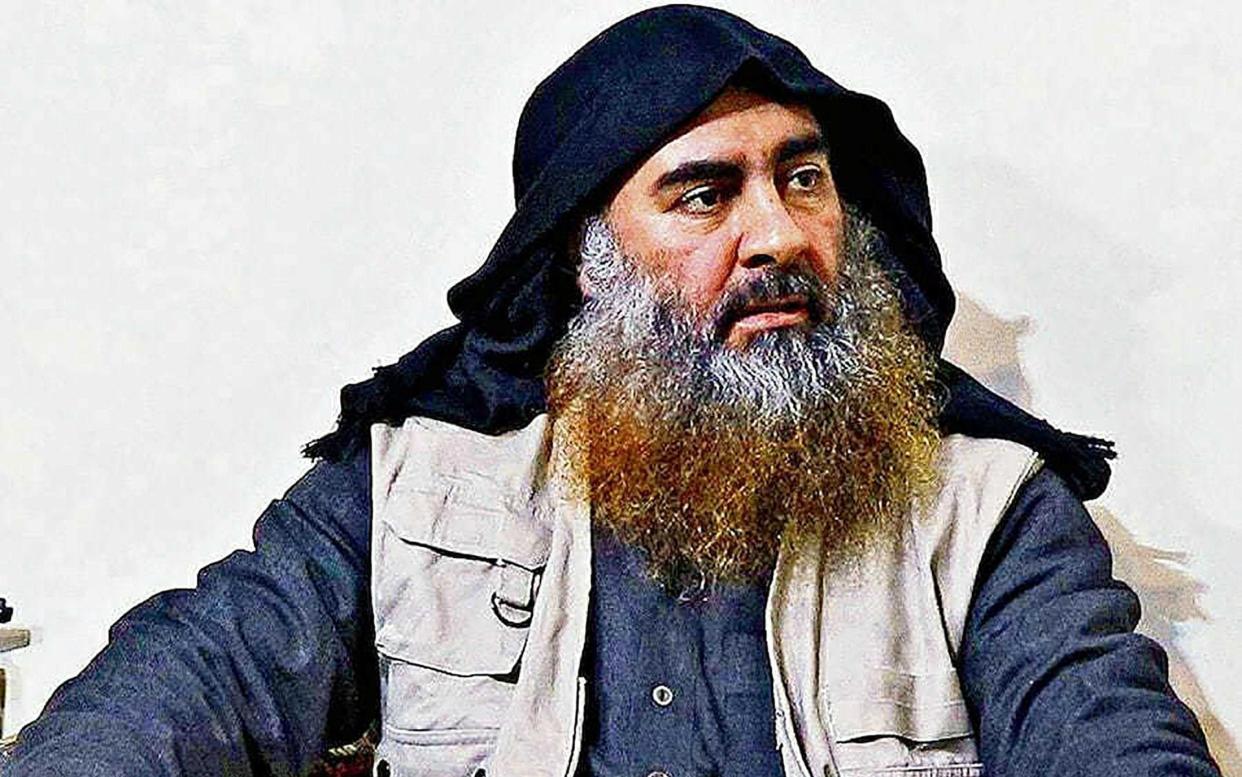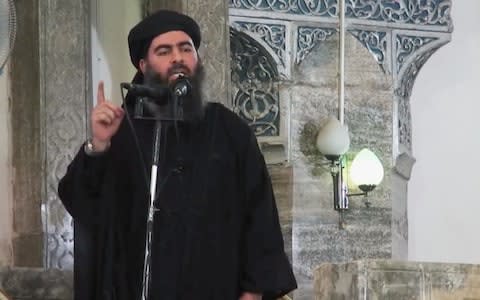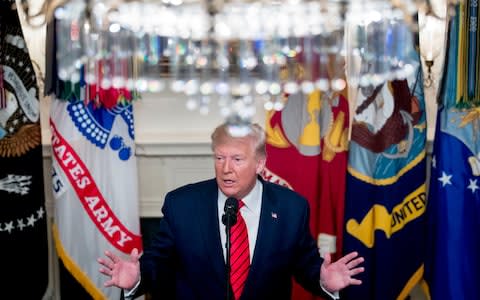Why Isil's new leader Abu Ibrahim al-Hashemi al-Qurayshi has inherited an empire in ruins

When Abu Bakr al-Baghdadi declared himself the caliph of the Islamic State in 2014 he did so in front of the world from the al-Nuri mosque in the city of Mosul, the crown jewel of a jihadist empire which at the time stretched across Iraq and Syria.
His successor’s coronation had none of that grandeur.
The man known by the nom de guerre Abu Ibrahim al-Hashimi al-Qurayshi takes over a caliphate of ashes. Isil has been driven from Mosul and every other city it once controlled. A territory once the size of Britain has been reduced to a few pockets in the deserts of eastern Syria.
Abu Ibrahim himself is in hiding along with the rest of Isil’s leadership. His elevation to the position of caliph was announced in a seven and a half minute audio tape, rather than in a speech at one of Islam’s most storied mosques.
Western intelligence officers are scrambling to piece together the identity of the new Isil leader but for now almost nothing is known about him.
“Nobody - and I mean nobody outside a likely very small circle within Isil - has any idea who their new leader is,” said Paul Cruickshank, editor of the Counter Terrorism Centre Sentinel.

Donald Trump tweeted on Friday that the US knows “exactly” who the Isil leader really is but gave no further details.
In the audio statement, Isil’s new spokesman described Abu Ibrahim as “an emir of war” who had experience of fighting against the United States. That has led some to suspect that, like Baghdadi, he is an Iraqi who fought US forces during the post-2003 insurgency.
While Isil’s de facto capital was the Syrian city of Raqqa, many of its senior leaders were Iraqis who emerged from al-Qaeda in Iraq.
“The new leader is almost certainly Iraqi,” said Hassan Hassan, an analyst at the Center for Global Policy. “He very likely has credentials as a longstanding field commander within Isil, who fought in Iraq after 2003 against the Americans."
Speculation has mounted that Abu Ibrahim may be Abdullah Qardash, a former officer in Saddam Hussein’s army who turned to jihad after the US invasion of Iraq. Qardash was imprisoned alongside by the US alongside Baghdadi in 2003 but both men were released and became leading al-Qaeda insurgents.
Qardash is believed to have stayed at Baghdadi’s side through the split with al-Qaeda in 2013, the formation of the caliphate a year later, and its ultimate defeat at the hands of a US-led coalition. Sometimes known as “the Professor”, Qardash has a reputation for brutality.
However, Mr Hassan said he thought it was unlikely Qardash is the new caliph.
One issue is that Qardash is from a Turkmen background, which would complicate his claim to be from the same tribe as the Prophet.
The two surnames Abu Ibrahim has adopted - al-Hashimi and al-Qurayshi - each hold significance. He is claiming to be a member of the Quraysh tribe, the clan of the Prophet Mohammed, which is a requirement for any caliph.
The name al-Hashimi suggests he is also claiming to be a Hashemite, a clan with direct lineage from the Prophet.
Qardash is also well known to Western intelligence, potentially making him a vulnerable target. Isil might prefer to choose a lower-profile leader to keep its enemies guessing.
The new caliph was announced five days after Baghdadi detonated a suicide vest in a tunnel rather than allow himself to be captured by advancing US commandos. That is a relatively quick succession for the scattered jihadists and suggests that Abu Ibrahim was been pre-anointed as the successor while Baghdadi was still alive.
His elevation was endorsed by Isil’s shura council, a consultative body of senior figures, and the statement mentioned that Baghdadi had left "a will" with instructions for after his death.
Abu Ibrahim is likely to address his new followers in the near future but Rita Katz, director of the SITE intelligence group, said it was unlikely he would risk revealing his identity. “I don't expect Isil will release any video speeches from this new leader or at least ones that show his face,” she said.

Abu Ibrahim will not control a territorial caliphate like his successor but he is still the head of the world’s most potent terror organisation, with thousands of loyal followers across the globe.
The US estimates that Isil still has around 14,000 fighters at large in Syria and Iraq. They have made their presence devastatingly felt in recent weeks with a series of car bombs in Kurdish-held areas of northeast Syria. “The insurgency has a lot of options,” warned Russell Travers, America’s top counterterrorism official.
Western officials fear that number could swell as Isil capitalises on the chaos in northern Syria to break its comrades out Kurdish-run prisons.
There around 10,000 Isil fighters, including 2,000 foreigners, currently in the custody of the Syrian Democratic Forces (SDF). Around 100 have escaped in recent weeks, Mr Travers said, but more may be able to break out in the coming months.
In one of Baghadi’s last ever addresses, he called on his supporters to free “the Muslim prisoners” from Kurdish custody. Isil’s new spokesman repeated that call in the statement announcing Abu Ibrahim’s ascendancy.
Beyond Syria and Iraq, the group has around 20 affiliates stretching from the Philippines to central Africa to Egypt’s Sinai desert. Some of these affiliate groups are only a few hundred strong. But others, like the Afghan franchise Isil Khorasan, can count on thousands of fighters.
“America, don't you realize that the Islamic State is now at the doorstep of Europe and is in central Africa? It is also expanding and remaining from east to west,” Isil said in the audio statement.
In the coming months we will learn more about Abu Ibrahim al-Hashimi al-Qurayshi and how he plans to lead his weakened, but still deadly, band of jihadists.

